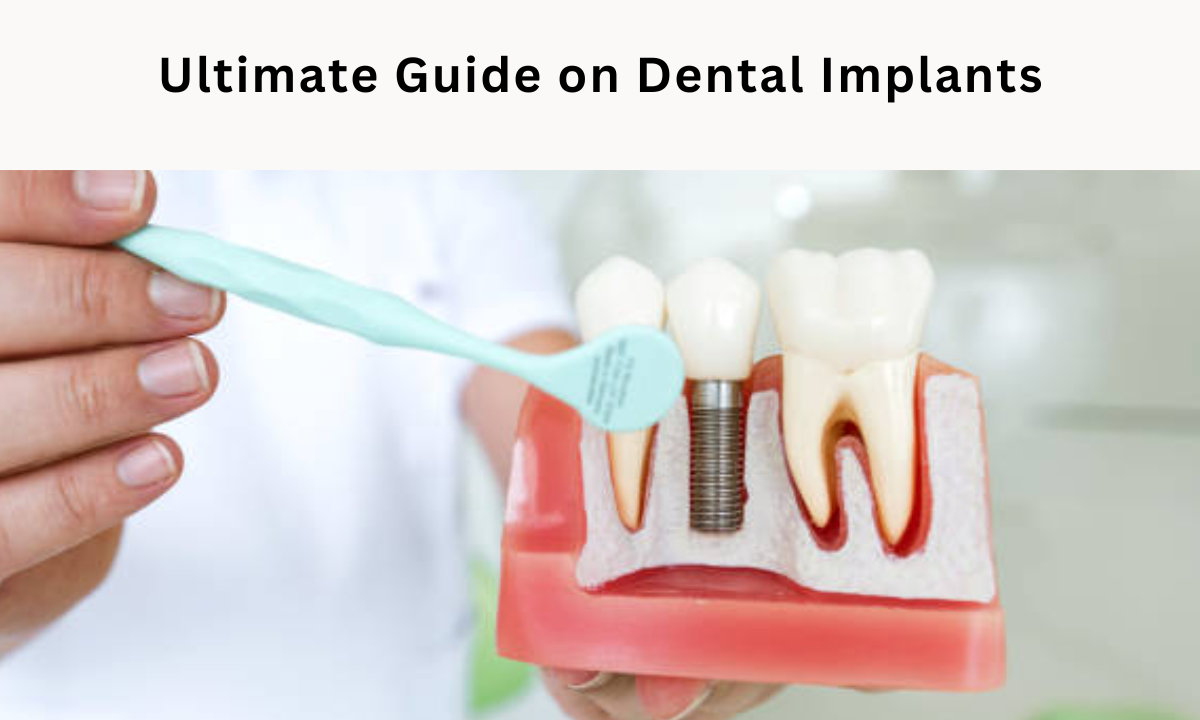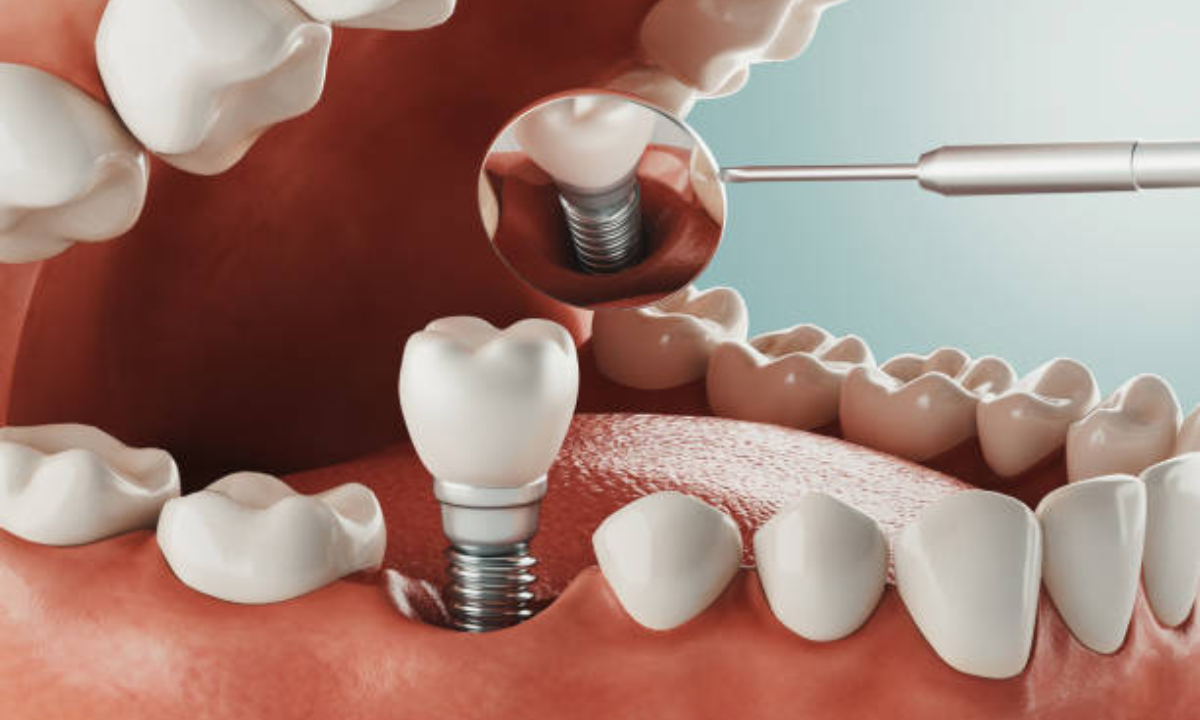Dental implants can be referred to as “artificial teeth” or “screw-in teeth,” which allows for a natural-looking permanent substitute for missing teeth. Dental health is the most important health aspect, although many people undergo problems such as tooth loss. Modern dentistry has evolved with a highly revolutionary solution referred to as dental implants. From one single tooth, up to several teeth or whole mouth restorations, dental implants changed everything concerning recovering self-esteem and oral functioning among individuals.
Through this highly inclusive article, we shall enter a comprehensive view into dental implants – what types are available, procedures, benefits, and why are the options of most choice today by anyone opting for the longest possible dental.
Dental Implants – All About It
These are posts that are based on titanium or zirconia and placed within the jawbone by surgical procedures, forming the basis for the replacement of missing teeth. What is unique to implants as opposed to dentures or bridges is that they are permanent fixtures, much like natural teeth, in appearance, feel, and function. That is why this new tooth replacement is strong and has an excellent success ratio, and they have been the first preference of most dental patients.
Dental implant variations
The selection of the type of dental implant is dependent on various factors that include how many teeth will be replaced, the condition of the jawbone, and the general oral health of the patient.
Endosteal Implants
These are the most common types of dental implants. This process involves making a hole in the jawbone in which a screw-like post is placed. After this area heals, a crown or an artificial tooth is then attached.
Subperiosteal Implants
These are placed under the gum but over the jawbone, suitable for patients who do not have adequate bone height or density
Zygomatic Implants
These are the lesser-known variety and are attached to the cheekbone rather than the jaw. It is applicable in cases wherein the upper jaw has insufficient bone structure.
All-on-4 Implants
It is a method that is utilized in full mouth restorations where four implants that are placed in strategic areas are capable of holding a complete arch of teeth.
Step-by-Step Procedure for Dental Implants
1. Initial Consultation and Evaluation
The process begins with a comprehensive consultation. Your dentist will examine your oral health through physical examination, X-rays, and CT scans. They will assess bone density, and gum health, and find the best treatment plan tailored to your needs.
2. Tooth Extraction (if necessary)
If the broken tooth or teeth are still there, they are extracted. With modern techniques, this process causes minimal pain.
3. Bone Grafting (if needed)
Bone grafting is performed if the jawbone is not thick enough to support an implant. Bone material is added to the jaw and left to heal. This will make the foundation strong enough to support the implant.
4. Implant Placement
This process, the insertion of an implant post in the jawbone, is done under local anesthesia, so the patient does not have pain during the surgery. The patient then leaves the dental clinic and waits for the osseointegration process that allows the implant to attach to the bone within 3-6 months.
5. Placement of Abutment
Once the implant and bone are bonded together, a connector piece called the abutment is attached to the implant post. The abutment acts as a base of the artificial tooth.
6. Placement of Crown or Prosthetic Teeth
Lastly, a particular crown, bridge, or prosthetic arch is fixed on the abutment. Such prosthetics must match the hue and shape of your natural teeth for a comfortable appearance.
Advantages of Dental Implants
1. Long-Term Endurance
Dental implants are designed to last a whole lifetime, unlike dentures or bridges which are designed to be replaced periodically.
2. Natural Appearance and Feel
Implants are shaped to appear and feel as close to the natural teeth as possible.
3, Better Oral Function
Chewing, biting, and speaking are done with ease as would happen with natural teeth.
4. Helps Avoid Bone Loss
The implants stimulate the jawbone and thus prevent bone degradation, which often occurs after the loss of the teeth.
5. No Interference with Neighboring Teeth
Unlike bridges, implants do not rely on neighboring teeth to be supported. They preserve the natural integrity of neighboring teeth.
6. Increased Confidence
Restoring your smile with implants enhances self-esteem and quality of life.
Dental Implants for Full-Mouth Restoration
The life-altering condition is now an issue of new solutions for all individuals who have lost most or all their teeth with full-mouth dental implants. The All-on-4 system is one technique among many examples that makes use of fewer implants stabilizing the whole arch of prosthetic teeth rather than utilizing a complete set of traditional dentures.
Dental implants are suitable for most healthy adults. However, other conditions like uncontrolled diabetes, heavy smoking, or severe bone loss might require special consideration. A dentist will guide you through the process of evaluation to determine your suitability.
Aftercare and Maintenance
Oral Hygiene
Brushing, flossing, and dental check-ups are necessary to maintain the longevity of your implants.
Dietary Habits
Steer clear of overconsumption of hard or sticky foods that might damage your crowns.
Routine Visits
You must visit your dentist regularly to make sure your implants are in the best shape; adjustments can be made appropriately.
Conclusion
Dental implants are revolutionizing restorative dentistry by providing reliable, aesthetically pleasing, and hard-wearing solutions against tooth loss. They can replace solitary teeth, restore complete mouth solutions, and fill in all needs without compromising oral health and functionality. Although this procedure demands commitment and patience, long-term benefits outweigh the investment.
If you’re considering dental implants, consult a qualified dentist at Growing Smiles to discuss your options. With advancements in technology and techniques, restoring your smile has never been easier or more effective. Invest in your oral health today and enjoy the confidence that comes with a radiant, healthy smile.


